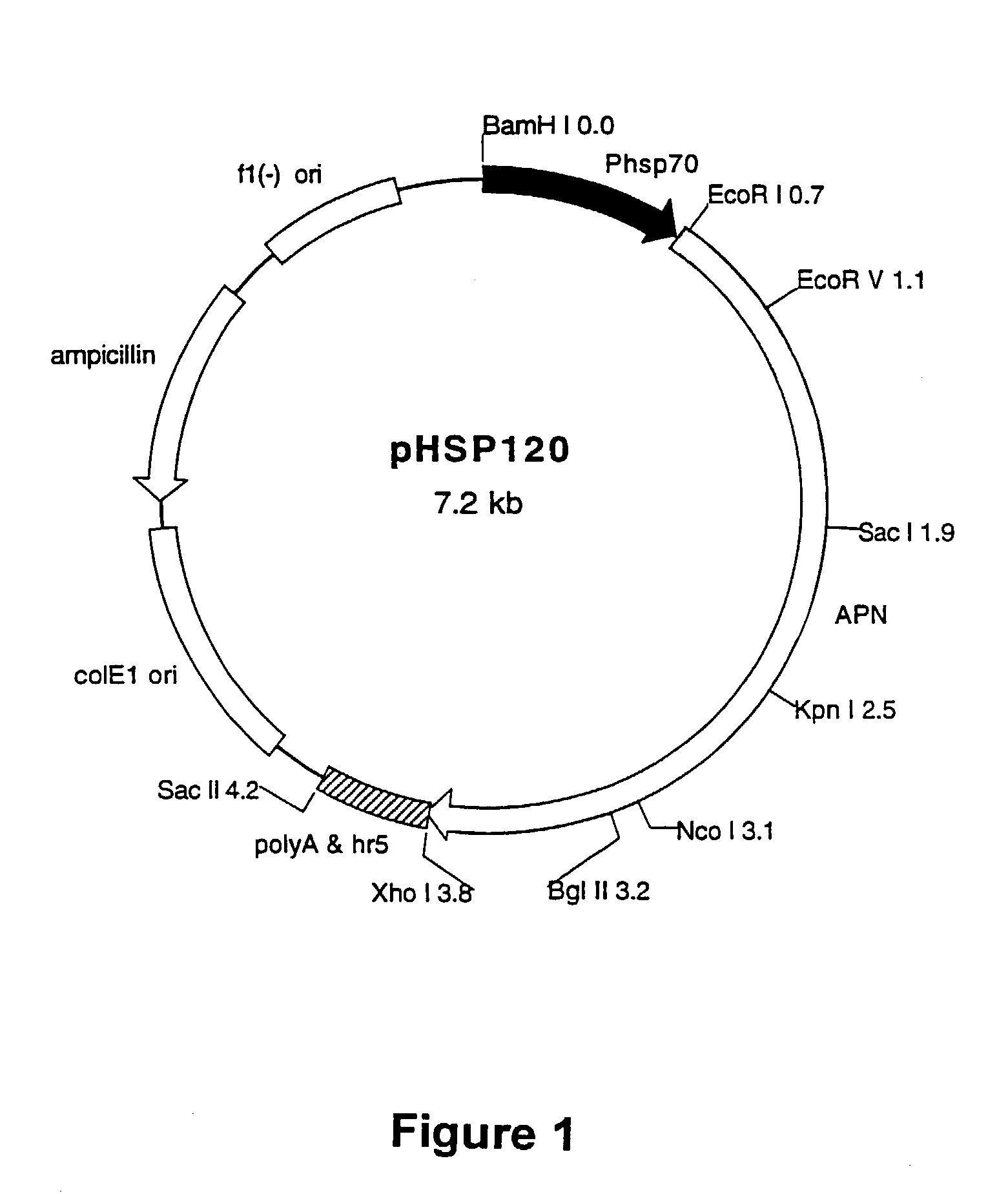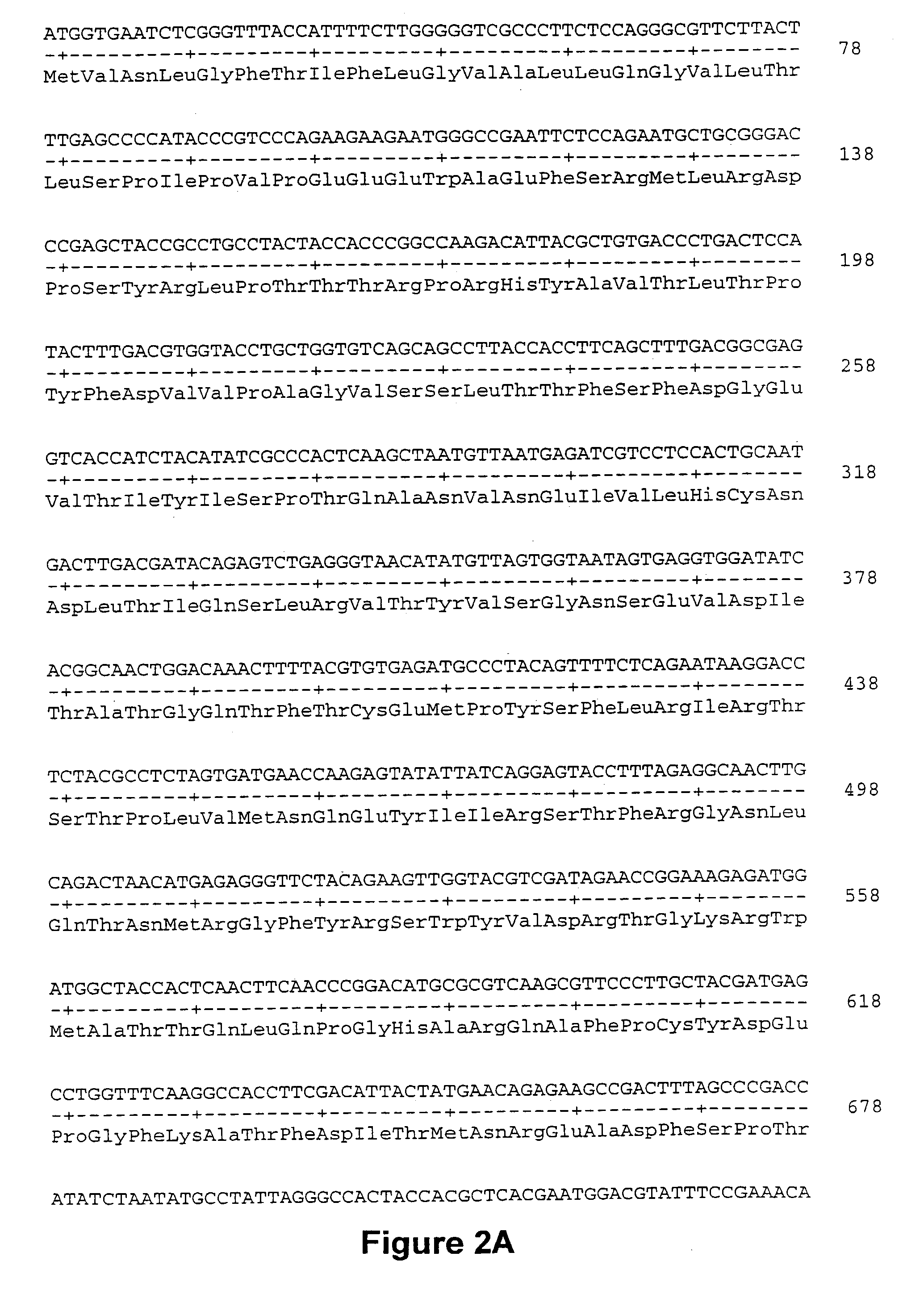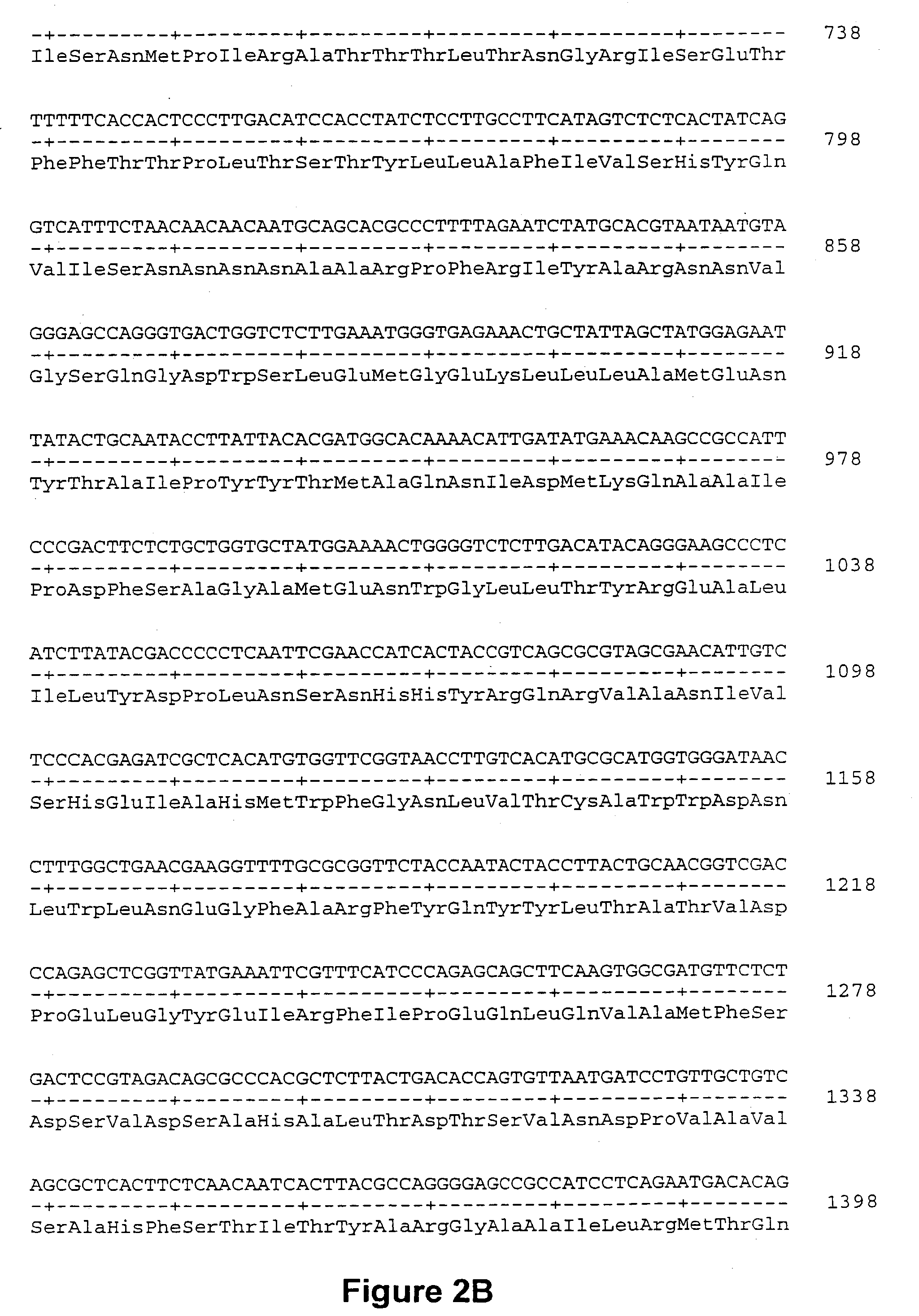Methods and materials for identifying novel pesticide agents
a pesticide agent and novel technology, applied in the field of methods and materials for identifying novel pesticide agents, can solve the problems of denolf et al. being unsuccessful in expressing two 120 kda apns, limited success in expressing insect apn cdna in insect cells,
- Summary
- Abstract
- Description
- Claims
- Application Information
AI Technical Summary
Benefits of technology
Problems solved by technology
Method used
Image
Examples
example 1
1.1. Cloning and Sequencing of M. sexta 120 kDa APN
[0088]A PCR strategy similar to that described in Tresnan et al. (1996) was used to clone the 120 kDa APN1 a cDNA from M. sexta. Four PCR primers were designed from the published 120 kDa APN1 sequence (Knight et al., 1995): MS1, 5′ATTTTCTTGGGGGTCGCCCTTC3′ (SEQ ID NO: 3); MS1R, 5′ACGCTACCATGTTAATG3′ (SEQ ID NO:4); MS5R, 5′TGCTGTGTCATTCTGAG3′ (SEQ ID NO: 5); MS4, 5′ AGGAGATTCGCCCATGACGCC3′ (SEQ ID NO: 6). Two vector primers were T3,5′AATTAACCCTCACTAAAGGG3′ (SEQ ID NO: 7) and T7, 5′GTAATACGACT CACTATAGGGC3′ (SEQ ID NO: 8). Primers were synthesized by the Molecular Genetics Facility (University of Georgia). A midgut cDNA library from M. sexta constructed in ZAPII vector (Stratagene, La Jolla, Calif.) was kindly provided by Dr. R. Graf. (Zoologisches Institut der Universitat, Munich, Germany).
[0089]All PCR reagents were purchased from FisherBiotech (Pittsburgh, Pa.). PCR was performed as follows: 30 cycles of 55° C. / 2 min, 72° C. / 3 min, ...
example 2
2.1 Expression of the Recombinant APN in E. coli and Production of the Polyclonal Antibody
[0093]To express truncated 31 kDa APN in E. coli, plasmid pET1000 was electroporated into an E. coli expression host, BL21(DE3), and recombinant HIS-tagged APN expressed and purified according to the manufacturer's instructions (Novagen, Madison, Wis.) using a Histrap column (Pharmacia, Piscataway, N.J.). Eluted fractions containing expressed APN were pooled and successively dialyzed against 4 M, 2 M, 1 M and 0 M urea in 50 mM Na2CO3, pH 10. The resulting sample was then centrifuged at 27 000×g for 30 min. The pellet was suspended in 1 ml of PBS (phosphate-buffered saline), and the supernatant was concentrated to 1 ml. Protein concentration in the supernatant and pellet were about 0.5 and 0.8 mg / ml, respectively. Both samples were stored at −80° C. until use. Antisera against 31 kDa truncated APN was raised by immunization of a NZW (SPF) rabbit with 0.2 mg of truncated APN administered in compl...
example 3
3.1 PIPLC Digestion and GPI Anchor Detection
[0099]Sf21 cells (107 cells) were lysed in 200 μl Laemmli sample buffer (Laemmli, 1970), and 15 μl of supernatant prepared as described above, was separated by SDS-PAGE, and then electrophoretically transferred to nitrocellulose membrane (Millipore Corp., Bedfore, Mass.). The membrane was blocked with 50 mM Tris-HCl, pH 7.4, 150 mM NaCl, 1 mM EDTA, 0.05% Tween-20 (buffer A) containing 3% BSA at room temperature for 2 h. After three washes with buffer A, the membrane was treated with phosphatidylinositol-specific phospholipase C (PIPLC, Sigma) (1.5 U) overnight at room temperature in 10 ml of 20 mM Tris-HCl, pH 7.4, 0.1% Triton-X100, 1 mM DTT and 3% BSA. The presence of a cleaved GPI group was detected using a polyclonal antibody against the cross-reacting determinant (CRD) of GPI-anchored proteins as described previously (Garczynski and Adang, 1995) (anti-CRD serum was kindly provided by Dr. K. Mensa-Wilmot, University of Georgia). Protein...
PUM
| Property | Measurement | Unit |
|---|---|---|
| Tm | aaaaa | aaaaa |
| Tm | aaaaa | aaaaa |
| pH | aaaaa | aaaaa |
Abstract
Description
Claims
Application Information
 Login to View More
Login to View More - R&D
- Intellectual Property
- Life Sciences
- Materials
- Tech Scout
- Unparalleled Data Quality
- Higher Quality Content
- 60% Fewer Hallucinations
Browse by: Latest US Patents, China's latest patents, Technical Efficacy Thesaurus, Application Domain, Technology Topic, Popular Technical Reports.
© 2025 PatSnap. All rights reserved.Legal|Privacy policy|Modern Slavery Act Transparency Statement|Sitemap|About US| Contact US: help@patsnap.com



